Webpages tagged with «Cod»

The Norwegian coast is a spawning hot spot for several highly valuable fishes. After hatching, the young fish drift, largely together, toward the Barents Sea. During this drifting period, they need to feed and are experiencing predation. In a paper published in Marine Ecology Progress Series (Ferreira et al. 2024) we explore the benefits and disadvantages of drifting together with other larvae.
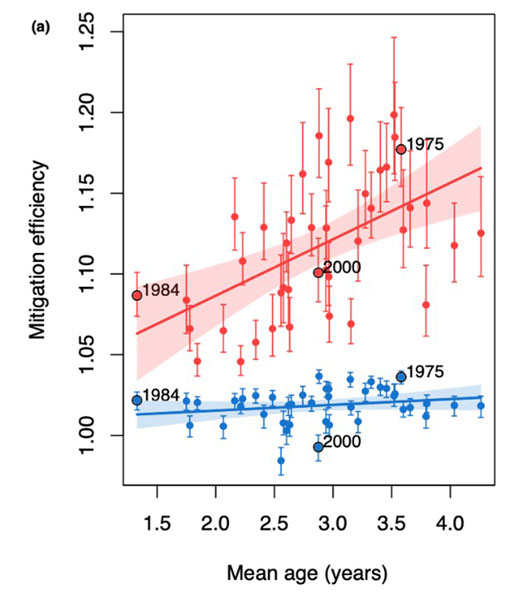
Climate change and increasing human activity are increasing risks of mass mortality events. In their recent study published in the Journal of Applied Ecology, Buttay et al. (2023) have focused on perturbations that could impact the early life stage of fish. Using the Northeast Arctic cod in the Barents Sea as an example, they evaluated different mitigation strategies alleviating the effect of such dramatic events on the population.
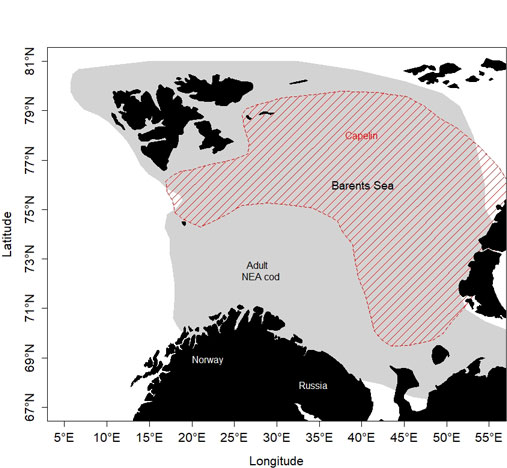
Understanding the changes in population abundance is essential to correctly manage and preserve the natural populations. Interaction between species, such as predation or competition, is an important factor affecting population dynamics. To understand population dynamics it is thus useful to study species interactions. In a recent study published in Biology Letters, we analysed the interaction between two iconic fish species of the Barents Sea: the capelin and the Atlantic cod.
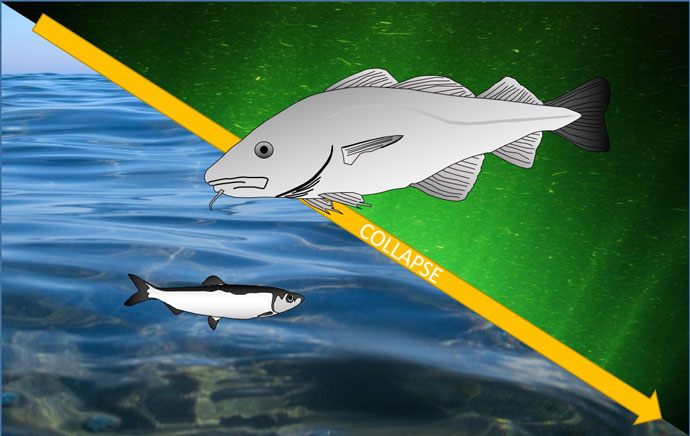
Over the last century, overfishing has led to the collapse of many fish stocks. Some of them, following successful management actions, have rebuilt their number but did they remain the same? In a recent study published in Ecology and Evolution we explored the effect of collapse on the stocks ecology by testing for differences before and after.
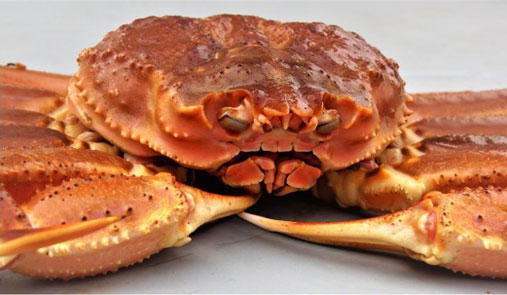
The snow crab (Chionoecetes opilio) is a newly established species in the Barents Sea, increasing in both distribution and abundance in recent years. In this Arcto-Boreal sea, they encountered the most abundant Atlantic cod (Gadus morhua) stock. What happens from here?
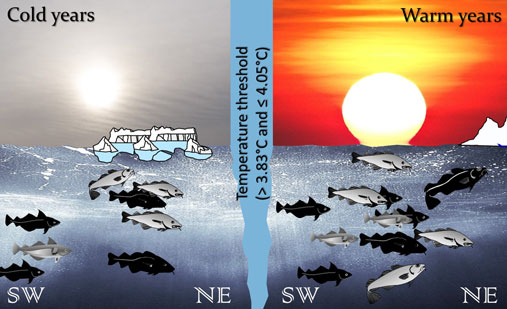
In the Boreal-Arctic seas, the two most abundant gadoid fish are the Atlantic cod (Gadus morhua) and the haddock (Melanogrammus aeglefinus). Both tend to respond to climate warming by an abundance increase and a change of distribution. Are these changes affecting how they are interacting? Statistical analysis using a state-space threshold model of acoustic and trawl survey data on cod and haddock abundance indicates that the interaction is changing with sea temperature: the cod negatively affecting the haddock when sea temperature is over 4 °C.
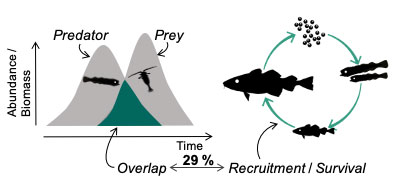
We assessed the effect of the predator−prey relationship on predator survival by developing a novel metric of predator−prey overlap using spatio-temporal statistical models. We found that the amount of overlap between cod larvae (length: 11−15 mm) and their prey explained 29 % of cod recruitment variability.
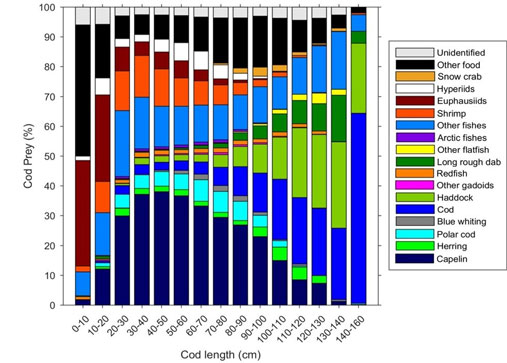
The Atlantic cod is one of the major predator in the Barents Sea estimated to consume over 5 million tonnes of fish in 2017. In a recent paper (Holt et al. 2019) we explore the diet of this species using a unique dataset encompassing 33 years of cod stomach sampling by Russian and Norwegian scientists. This time-series is the most comprehensive available cod diet dataset to date and is crucial in helping to answer ecologically important questions on what cod eat and why it matters for predator-prey and food-web dynamics in the Barents Sea ecosystem.

Where the fish are spawning is of tremendous importance for the population (see our post) but also for the industry relying on it, especially since harvesting is often concentrated on fish that aggregate for to spawn. Climate change and harvesting are known to strongly affect the fish population with effect on the spawning location. In a recent paper (Langangen et al. Global Change Biology) we explore the question: “who is the culprit of spawning location change: Climate or fishing?”

Many heavily fished fish stocks are dominated by young and small fish. The reason is simple: the chance to reach old age is small. If the fisheries selectively target large fish, the dominance of young and small fish becomes even larger. Such skewed age and size distributions can make the fish populations more sensitive to detrimental effects of oil spills.

Spawning time and location are important factors affecting the reproductive cycle for migratory fish by potentially affecting offspring survival and growth. We examine this relationships by using a drift model for early life stages (eggs to age 1) of the Northeast Arctic cod combined with empirical estimates of spatial variation in mortality at two different life stages (Langangen et al. 2016).
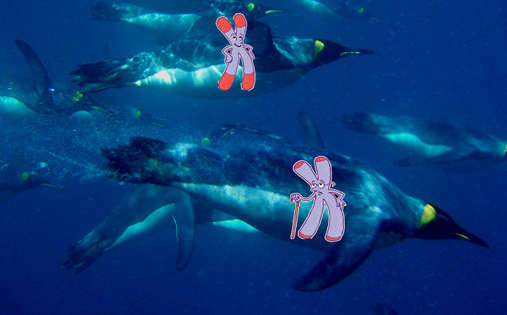
Growing evidence suggests that the telomeres’ length (a non-coding DNA sequence localized at the end of the chromosomes) is related to individual breeding performances and survival rates in several species.
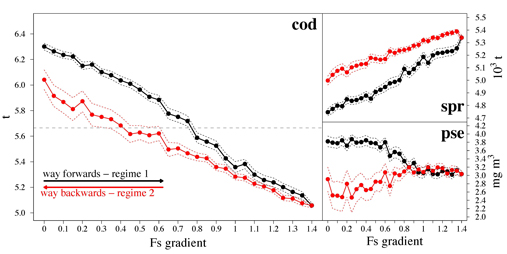
In this study we assessed the chances of recovery of the Baltic Sea cod stock and conclude that it will never come back to the status it had more than three decades ago and that the economic losses associated to this new baseline amount to 120 million euros per year.

Many marine fishes experience tremendous mortality during their first months of life. Understanding the causes of this mortality and why it varies from year to year has challenged fisheries ecologists for more than a century. Part of the difficulty comes from the fact that many fishes have free-floating larvae. It is therefore difficult to follow a group of fish larvae over time in the field and investigate which factors cause mortality.

Since Hjort’s ground-breaking work, it is admitted that the survival from the egg to the first reproduction is an essential factor affecting the dynamics of fish populations (see post). Human activities around spawning ground may have an effect on the mortality of the younger age. One of such potentially risky activity is oil exploitation which is on the increase in the northern areas.

The year 2014 marks the 100th anniversary of the Norwegian oceanographer and biologist Johan Hjort’s ground-breaking work, Fluctuations in the great fisheries of northern Europe, viewed in the light of biological research. This anniversary was commemorated with a special issue of ICES Journal of Marine Science.

Understanding the interaction between species is particularly actual in marine systems where ecosystem approach of management is desirable. This is particularly the case in high latitude systems such as the Barents Sea where climate change effect is supposed to be the strongest.
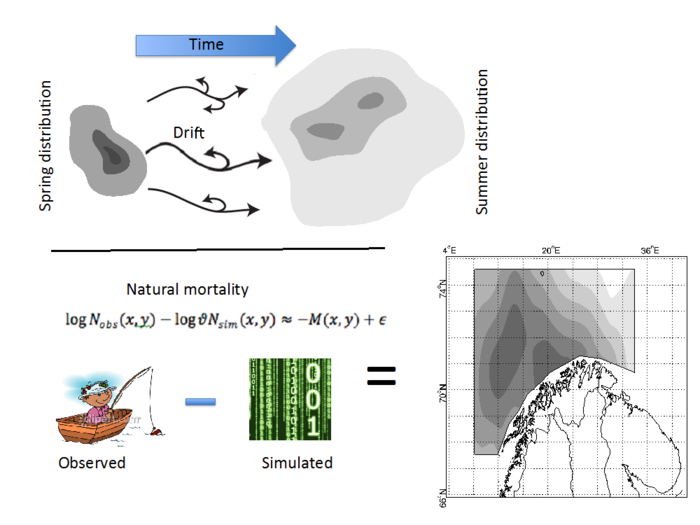
Mortality of pelagic eggs and larvae of marine fish is often assumed to be constant both in space and time due to lacking information. This may, however, be a gross oversimplification, as early life stages are likely to experience large variations in mortality both in time and space.
